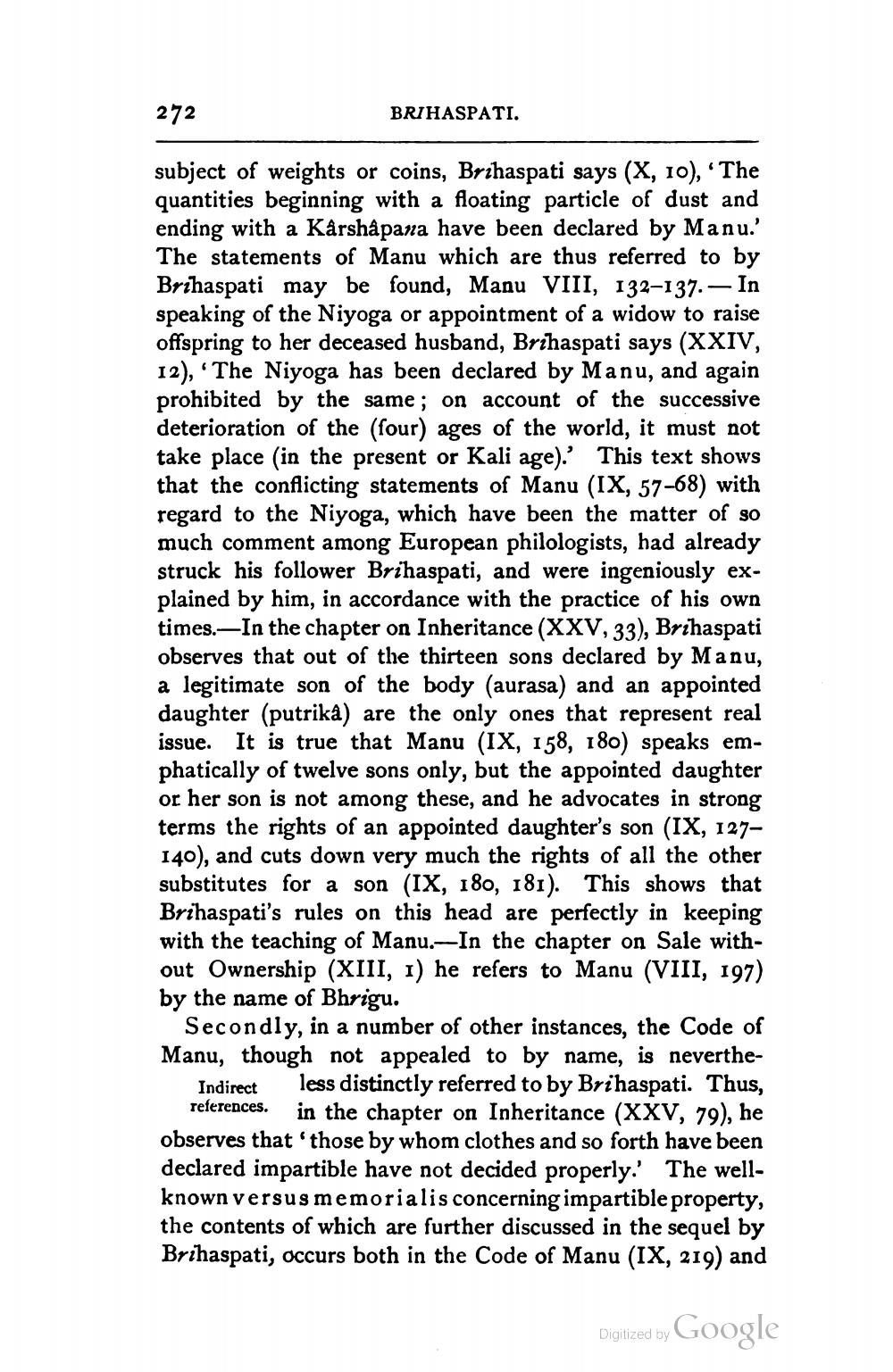________________
272
BRIHASPATI.
subject of weights or coins, Brihaspati says (X, 10), “The quantities beginning with a floating particle of dust and ending with a Kårshapana have been declared by Manu.' The statements of Manu which are thus referred to by Brihaspati may be found, Manu VIII, 132-137.— In speaking of the Niyoga or appointment of a widow to raise offspring to her deceased husband, Brihaspati says (XXIV, 12), 'The Niyoga has been declared by Manu, and again prohibited by the same; on account of the successive deterioration of the (four) ages of the world, it must not take place (in the present or Kali age).' This text shows that the conflicting statements of Manu (IX, 57-68) with regard to the Niyoga, which have been the matter of so much comment among European philologists, had already struck his follower Brihaspati, and were ingeniously explained by him, in accordance with the practice of his own times. In the chapter on Inheritance (XXV, 33), Brihaspati observes that out of the thirteen sons declared by Manu, a legitimate son of the body (aurasa) and an appointed daughter (putrika) are the only ones that represent real issue. It is true that Manu (IX, 158, 180) speaks emphatically of twelve sons only, but the appointed daughter or her son is not among these, and he advocates in strong terms the rights of an appointed daughter's son (IX, 127140), and cuts down very much the rights of all the other substitutes for a son (IX, 180, 181). This shows that Brihaspati's rules on this head are perfectly in keeping with the teaching of Manu.- In the chapter on Sale without Ownership (XIII, 1) he refers to Manu (VIII, 197) by the name of Bhrigu.
Secondly, in a number of other instances, the Code of Manu, though not appealed to by name, is neverthe
Indirect less distinctly referred to by Brihaspati. Thus,
references. in the chapter on Inheritance (XXV, 79), he observes that those by whom clothes and so forth have been declared impartible have not decided properly. The wellknown versus memorialis concerning impartible property, the contents of which are further discussed in the sequel by Brihaspati, occurs both in the Code of Manu (IX, 219) and
Digilized by Google




